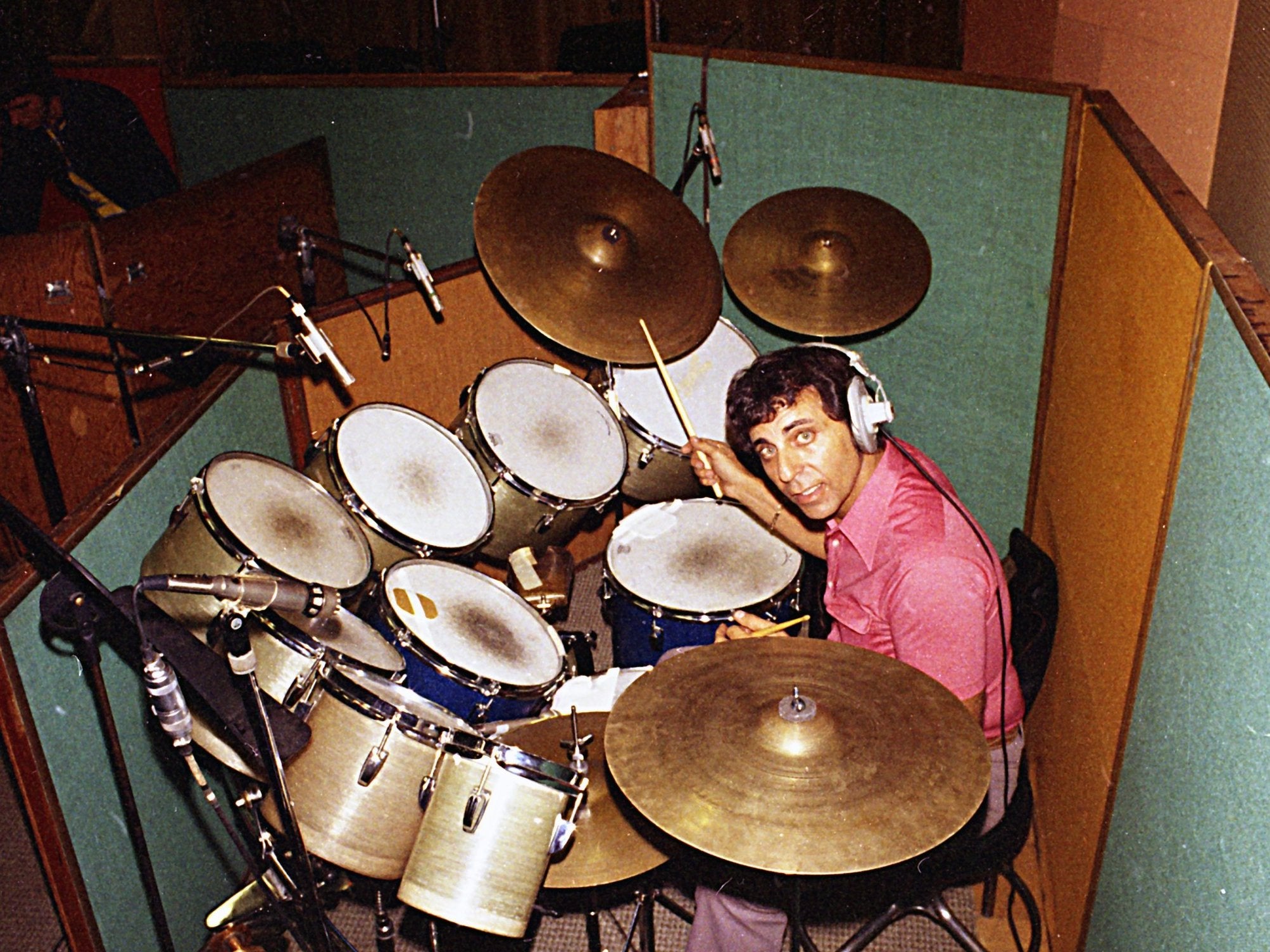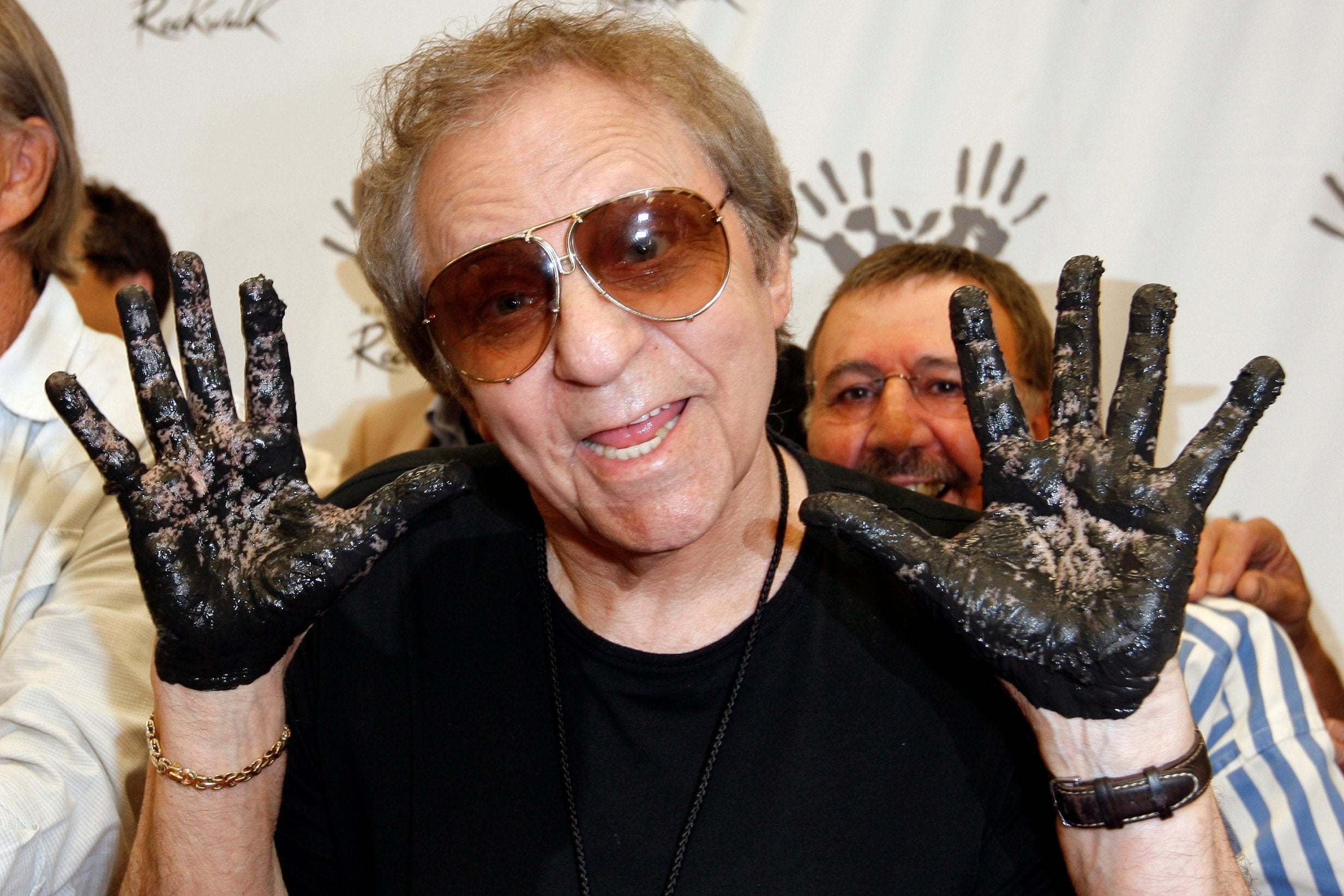Hal Blaine, powerhouse drummer behind some of the Sixties and Seventies’ biggest hits
Blaine was a member of LA session group The Wrecking Crew, who played on classics by Phil Spector, the Beach Boys and many others

Your support helps us to tell the story
From reproductive rights to climate change to Big Tech, The Independent is on the ground when the story is developing. Whether it's investigating the financials of Elon Musk's pro-Trump PAC or producing our latest documentary, 'The A Word', which shines a light on the American women fighting for reproductive rights, we know how important it is to parse out the facts from the messaging.
At such a critical moment in US history, we need reporters on the ground. Your donation allows us to keep sending journalists to speak to both sides of the story.
The Independent is trusted by Americans across the entire political spectrum. And unlike many other quality news outlets, we choose not to lock Americans out of our reporting and analysis with paywalls. We believe quality journalism should be available to everyone, paid for by those who can afford it.
Your support makes all the difference.Hal Blaine was the drummer who provided the seismic backbeat and cannon-shot snare on thousands of rock songs and scores of hits – so many that the Rock and Roll Hall of Fame dubbed him “the most recorded drummer in history”.
In the heady era of Sixties and Seventies rock, few drummers were as busy or respected as Blaine, who has died aged 90.
He kept a dozen identical kits ready to go at all times and used a roadie to hop between seven studios in a single day.
While few listeners knew his name (he was typically uncredited in the liner notes, even while filling in for Micky Dolenz of the Monkees or Dennis Wilson of the Beach Boys), he played on some 35,000 recorded tracks, including 40 US No 1 singles and 150 Top 10 hits, and was said to have covered the walls of his home with gold records.
“If music in the second half of the 20th century were the Empire State Building,” Art Garfunkel once said, “Hal Blaine would be the ground floor.”
Blaine trained as a jazz drummer before becoming a member of The Wrecking Crew, a loose collective of Los Angeles session musicians that helped to create producer Phil Spector’s “wall of sound,” a dense, rich recording style that was employed or emulated on dozens of 1960s rock records, including the Beach Boys’ “Pet Sounds.”
The Wrecking Crew included guitarists Glen Campbell and Tommy Tedesco, bassists Carol Kaye and Joe Osborn, keyboard players Don Randi and Leon Russell, saxophonist Steve Douglas and fellow drummer Earl Palmer – but Blaine, “by virtually unanimous agreement, sat front and centre as the unofficial dean of the whole bunch”, according to Kent Hartman’s 2012 history of the group, The Wrecking Crew.
While older sidemen played jazz or pop standards in formal blue blazers, Blaine and his younger cohort embraced rock’n’roll and dressed in jeans and T-shirts. He once said he coined the moniker “Wrecking Crew” after hearing complaints from older session musicians: “They used to say, ‘These kids are going to wreck the business!’ Instead, we took it over.”
Blaine played on his first No 1 single in 1961, using a brush on the snare and a soft mallet on the tom-tom for Elvis Presley’s “Can’t Help Falling in Love”. He went on to lay down the beat on the Beach Boys’ “Good Vibrations” and the Byrds’ cover of “Mr Tambourine Man” and he played on the bottom of his snare head to create an unconventional military sound for “Eve of Destruction”, Barry McGuire’s chart-topping 1965 protest song.
From 1966 to 1971, Blaine was featured on six straight Grammy Record of the Year-winning singles: “A Taste of Honey” by Herb Alpert and the Tijuana Brass; “Strangers in the Night” by Sinatra; “Up, Up and Away” and “Aquarius/Let the Sunshine In” by the 5th Dimension; and “Mrs Robinson” and “Bridge Over Troubled Water” by Simon and Garfunkel.
Despite his blistering recording pace, Blaine was rarely known to repeat himself and often experimented with new recording techniques and instruments. He added eight tom-toms to his kit to create a drum set known as “the Octa-Plus”, beat on an empty water cooler for the Beach Boys’ “Caroline No” and struck a trio of plastic orange-juice bottles for “God Only Knows.”

For “The Boxer”, Simon and Garfunkel’s 1969 “lie-la-lie” single, he simply struck a snare drum during the chorus – but recorded next to an empty elevator shaft to make it sound more like a shotgun than a snare.
Blaine was perhaps best known for his drumming on the 1963 Ronettes single “Be My Baby,” which begins with a powerful “boom ba-boom chack” bass-and-snare phrase. Produced and co-written by Spector, the song was ranked No 22 on Rolling Stone’s list of the 500 Greatest Songs and was described by Wilson as “the greatest record ever produced”.
“Hal Blaine would have become a legend if he had only played on ‘Be My Baby’ and nothing else,” drummer Max Weinberg once said. But Blaine, who was inducted into the Rock Hall of Fame in 2000 and the Percussive Arts Society’s Hall of Fame in 2012, said the beat was actually a mistake.
“We rehearsed it with a regular backbeat on two and four,” he said. “But then when we did the first take, I dropped my stick and missed the two. So being the faker that I am, I just played the four, and one of the things you learn is that when you make a mistake, if you do it every four bars it becomes part of the song.”
Harold Simon Belsky was born in Holyoke, Massachusetts, in 1929. His parents were Jewish immigrants from Russia, and the family moved to Hartford, Connecticut, when Blaine was seven, after his father got a job with the Connecticut Leather Co.
Blaine – he changed his name soon after he began drumming professionally – used the dowels of a kitchen chair as his first set of sticks. His musical education began in earnest at the State Theatre in Hartford, where he watched jazz drummers like Gene Krupa and Buddy Rich and sat so close to the stage he said he “could smell the powder on the performers”.
He moved to southern California with his family at age 14 and two years later dropped out of high school in San Bernardino to join the army. Blaine played with a military band stationed in Korea, and after being discharged in 1948, he studied for two years at the Roy C Knapp School of Percussion in Chicago, performing mainly at strip clubs.
He toured with musicians including Patti Page and teen idol Tommy Sands and by the early 1960s was living in southern California, settling into an anonymous – but lucrative – studio life with The Wrecking Crew.
“I was living in a gorgeous mansion with my Rolls-Royce and my yacht,” Blaine said, “so who cared whether they knew my name or not? I didn’t think that way because I was taking the money and running, while some well-known groups were living destitute.”
He acquired some mainstream recognition with the help of a memoir, Hal Blaine and the Wrecking Crew (1990), and a documentary, The Wrecking Crew! (2008). By then, he had moved from recording rock songs to commercial jingles; he also led drum clinics and released a comedy album, Buh-Doom! (1998), that drew on jokes he told during his studio heyday.
Blaine was married at least six times. His daughter, Michelle Blaine, worked as an assistant to Spector. In addition to his daughter, survivors include seven grandchildren.
In 2011 Blaine said he was still drawn to the rock’n’roll songs that defined his career, although listening to oldies radio stations could be a dizzying experience. “It’s an amazing ego trip since I’m on so many of the songs,” he said. “But it has its drawbacks. You hear your youth. I hear a day at the office or a divorce.”
Hal Blaine, drummer, born 5 February 1929, died 11 March 2019
© Washington Post
Join our commenting forum
Join thought-provoking conversations, follow other Independent readers and see their replies
Comments